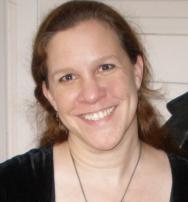Late summer and early fall mark the time for a curious mix of social, cultural and athletic events: traditional Scottish Games. Popular across the Highlands of Scotland, these games trace back to the Middle Ages, and are becoming increasingly popular with Americans of Celtic descent. In the U.S., there are approximately 50 large, highly organized Scottish Games each summer, without countless smaller events all over the country. Activities include bagpipe playing, pipe and drum events, Highland dancing and other Scottish musical traditions, food and whiskey, wearing the kilt and the so-called “heavy events,” which require throwing large and weighty objects. The best known of these is the Caber toss.
While a traditional caber is made from a larch tree, larches aren’t widely available, so the caber simply needs to be a wooden pole of regulation size: 9 feet 6 inches (5.94 m) tall with a weight of 175 pounds (79 kg). While many throwing sports (javelin, shotput) are about how far the object is tossed, this isn’t true with caber tossing: the primary objective is to throw it so the pole turns end over end, falling away from the tosser (thrower). Ideally it should fall directly away from the tosser in the "12 o'clock" position. The actual distance of the throw is unimportant. While the sport certainly isn’t for many – height and significant strength are requirements – it makes for a great spectator sport.
Other heavy events include the stone put (similar to shotput), the Scottish hammer throw, the weight throw (which involves tossing heavy weights attached to a chain), and a sheaf toss in which participants must pitch a 20-pound bundle of hay over a bar using a pitchfork. Truly authentic Scottish Games include an event called the Maide Leisg or “lazy stick.” In this event, two men sit on the ground with the soles of their feet pressed together and take each end of a stick and pull until one of them (the loser) is lifted off the ground. In recent years, Scottish Games have broadened to include women’s heavy events as well, with the weighty objects scaled down. You'll also find children's events, such as the 'haggis hurl.'
According to tradition, heavy event participants must wear a kilt. The games are based on agricultural and military activities from feudal times, according to Dave McKenzie of Mid-Atlantic Scottish Athletics, an organization that sanctions events held up and down the East Coast. In an interview with Virginia’s Roanoke Times, McKenzie said that tossing heavy weights was what farmers once did to build the stone walls that line Scotland’s landscape. The logs, or cabers, may have been used for stream crossings or to scale a castle under siege. Feats of strengths were often used to choose clan leaders.
In the U.S., the St. Andrew Society of Detroit runs the longest continuous Scottish Games in North America: the group’s first event was held in 1836. The Celtic Classic Highland Games & Festival, held each year in September in Bethlehem, Pennsylvania, is one the largest in North America, with 250,000 visitors annually. Other large Scottish Games events around the U.S. include the New Hampshire Highland Games and Festival in Lincoln, New Hampshire, Oklahoma’s annual Scotfest in Tulsa, and the Stone Mountain Highland Games in Georgia. In addition to heavy events, food, drink and music, many of these games are an occasion to carry out ceremonial clan business.
But if donning a kilt and hurling heavy objects are not your dram of whiskey, the Celtic Highland Games and Clan Gathering of Douglas County, Oregon features a less athletic event, though just as uniquely Scottish: a haggis-eating contest.

